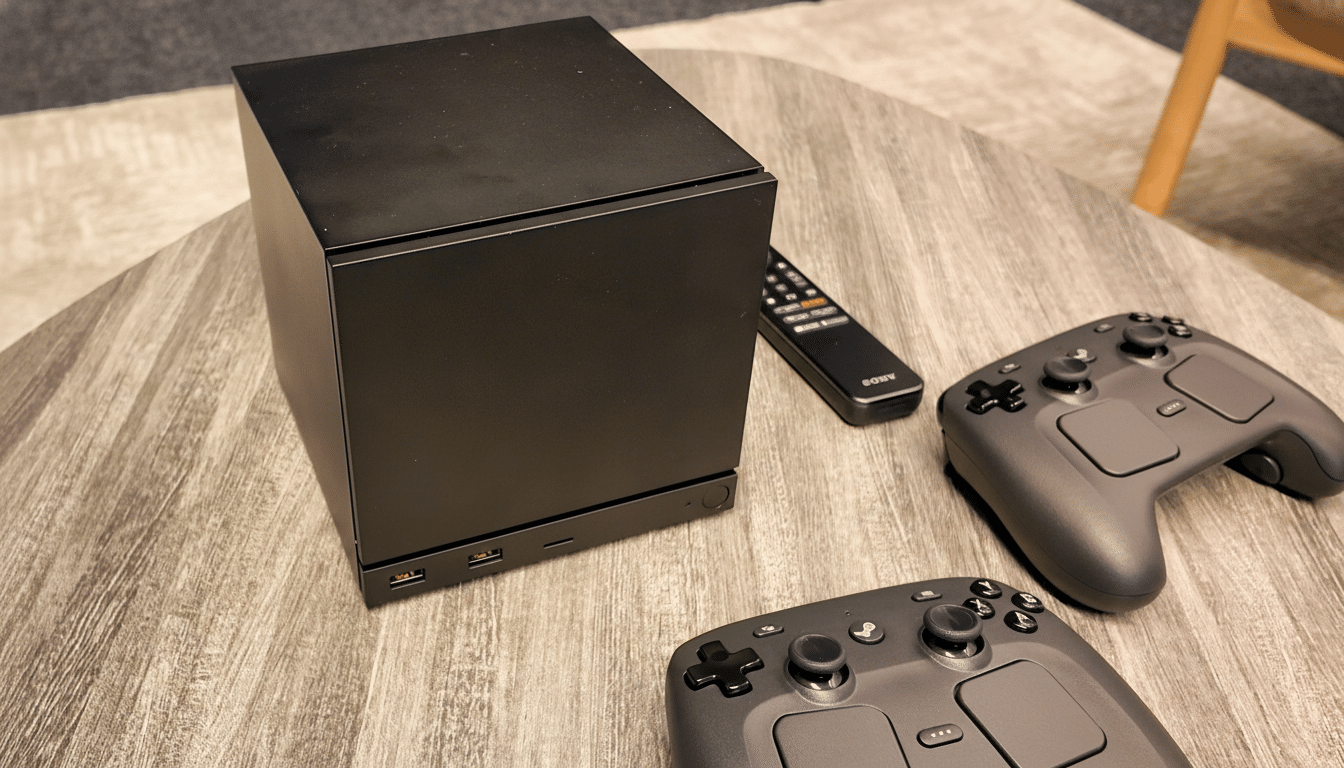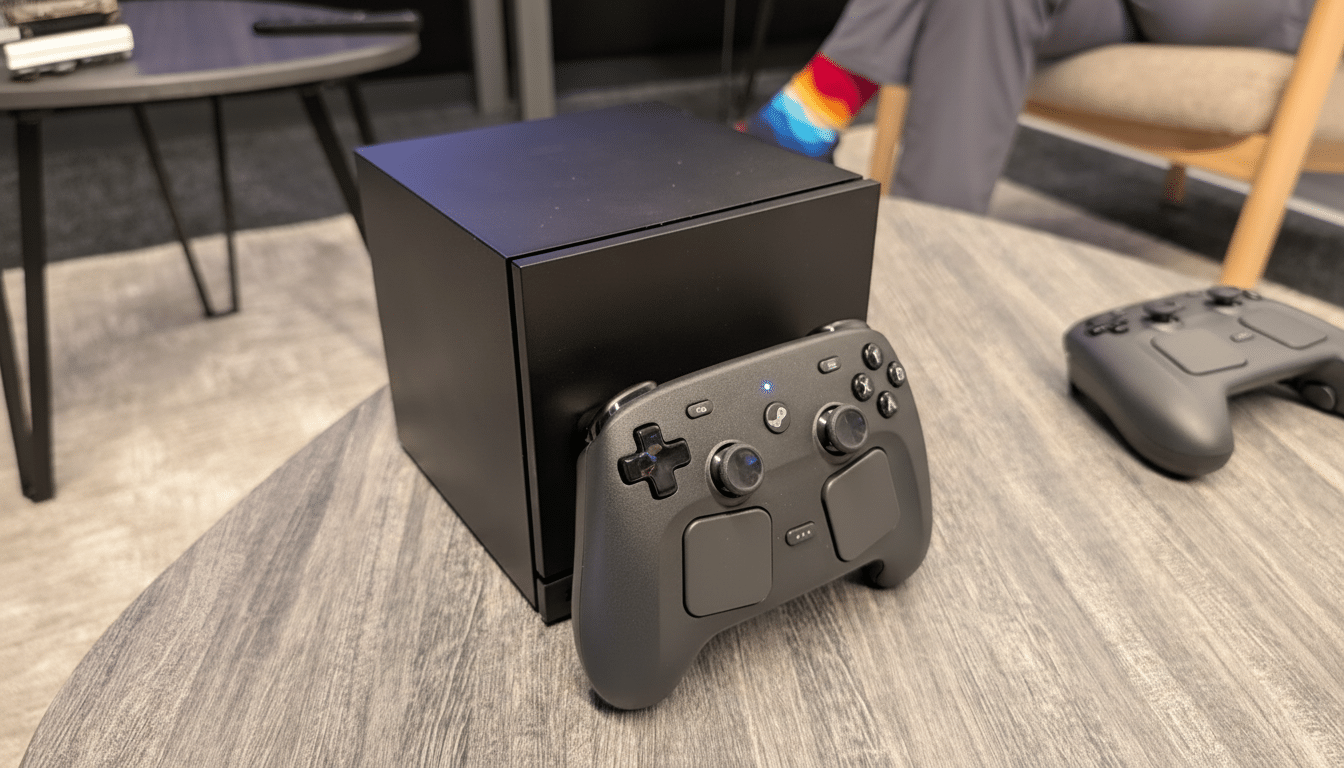Valve is returning to the living room in a big way with an entire line of Steam hardware, showing off next-generation Steam Machines, a wireless-first Steam Frame VR headset and a revamped Steam Controller. It’s the company’s most aggressive multi-device push since it introduced the Steam Deck and Index, and it is squarely targeting couch-friendly, high-performance gaming without PC fiddling.
Specifics are myriad, costs less so, and the release window is set for 2026. But the plan is clear: Marry a little console-style PC to frictionless VR and a controller that can offer precision while being flexible, all in service of Steam’s massive ecosystem.

Why Valve’s Living Room Push Is Significant
Valve’s early Steam Machines faltered under fragmented specs and iffy software support, but things have changed. Steam has more users, and they’re more active than ever – third-party trackers like SteamDB have recorded peaks of over 35 million concurrent users recently – and developers are increasingly optimizing across screens because of the momentum generated by the Steam Deck.
The idea is to make PC seem as turnkey as console—with VR that prefers freedom over tethers—while maintaining the openness that makes Steam endearing. It also leaves Valve with a trio of hardware that can potentially reach across the living room: local 4K play, wireless VR and a controller in the middle.
4K240 in a Tiny Box: The Steam Machine at 60% Size
The new Steam Machine goes small but serious: a cube that’s about six inches square, with a semi-custom AMD Zen 4 CPU with 6 cores and 12 threads built in, as well as a semi-custom RDNA 3 GPU featuring 28 compute units. Valve pairs 16GB of DDR5 system memory with 8GB of GDDR6 VRAM, with a choice between a 512GB and 2TB NVMe SSD. The company boasts six times the horsepower of the Steam Deck—enough to pursue high-refresh 4K gaming from the couch.
With connectivity that is enthusiast-leaning without being fussy. DisplayPort 1.4 will come in at up to 4K at 240Hz or 8K at 60Hz (with DSC), while HDMI 2.0 will handle them at a maximum of 4K and 120Hz. Front I/O is two USB-A 3.2 Gen 1 ports; back adds a pair of USB-A 2.0, one USB-C 3.2 Gen 2, Ethernet and a microSD slot. The exchangeable front faceplate is a bit of customization that’s reminiscent of console skins rather than PC cases.
Steam Frame Is 6GHz-Linked, Wireless-First VR
The Steam Frame by Valve is framed—literally—by streaming. The headset comes with a pair of controllers and a specialized 6GHz wireless adapter to establish an untethered, high-bandwidth connection for VR and non-VR streaming. Lighter and less bulky than Valve Index but also without the need for external base stations (its inside-out tracking is another example of the software smarts Valve embodies), the Frame leverages foveated streaming to focus bandwidth and fidelity on where your eyes are looking.
Inside, Valve opted for a Snapdragon 8 Gen 3 chip (the first in a handheld gaming device), 16GB of LPDDR5X RAM and either 256GB or 1TB of UFS storage. The display is a 4K LCD—2160 x 2160 per eye—with refresh rates up to 144 Hz. Wireless spec support is Wi-Fi 7 and Bluetooth 5.3, while a 21.6Wh battery fuels the headset. Valve says the Frame can handle your entire Steam library via streaming, and it won’t stop at that: PC and mobile VR apps are on the menu, and Linus Tech Tips points out that it’s possible to sideload Android APKs onto the headset.

It’s pretty obvious what the strategy here is: to bring in PC levels of fidelity and library scope, ditching the cables and complexity that too often exclude VR from people’s living rooms.
A dedicated 6GHz link and Wi-Fi 7 promise lower latency and jitter, but real-world performance will depend on the quality of your encoding hardware and local network circumstances.
An All-New Steam Controller Designed for the Precision of a Mouse
The new Steam Controller combines traditional gamepad ergonomics with the precision of actual mice and keyboards.
Two trackpads join a pair of parallel thumbsticks—reversing the original controller’s layout—for more precise cursor control and strategy titles that demand mouse-like input. The sticks employ TMR (tunneling magnetoresistance) sensors that promise greater responsiveness and longer life than your typical potentiometer, while the pad incorporates motion controls and haptic feedback through high-definition rumble as well as a Steam button and quick-access menu.
A removable puck serves as a low-latency wireless transmitter and drops the controller onto a charging dock. For broader compatibility with other devices, you can also use Bluetooth or USB-C. Valve says the controller is optimized for use with both the Steam Machine and the Steam Frame, but that it works just as well on PCs and laptops.
Pricing, Availability and the Road Ahead
Valve has not disclosed pricing. The Steam Machine will come packaged with the new Steam Controller, which will be available to purchase on its own as well. The Steam Machine and Steam Frame will both ship in 2026, offering developers plenty of time to tweak interfaces and performance targets around couch-first play and wireless VR.
Momentum and software are the only things that matter. If Valve gets pricing and polish right, it could finally achieve the Steam living room vision: a 4K high-refresh gaming box for your living room, an untethered VR headset, and PC games that actually feel native to playing on a couch. IDC analysts expect AR/VR growth to return from the middle of the decade, and with Steam’s scale, Valve is setting up for that upswing in a place where many would actually prefer to play: on their big screens.

